by Lisa Cooke | Jan 13, 2017 | 01 What's New, Church, Records & databases |
Special thanks to the New England Historic Genealogical Society and the Archdiocese of Boston for their effort to make Sacramental records for genealogy available online. These and other new and updated genealogical collections are mentioned in this weeks list from the United States, Ireland, United Kingdom, Italy, and free record searches at Findmypast!

United States (New England area) & Canada – Sacramental Records for Genealogy
NEHGS has announced the New England Historic Genealogical Society (NEHGS) and Archdiocese of Boston have made millions of 18th and 19th century sacramental records searchable online.
The records, which document baptisms, confirmations, marriages, and other sacraments, cover more than 150 parishes from throughout eastern Massachusetts. They also hold records that were carried out in other locations in New England and parts of Canada.
These detailed documents are a critical resource for researchers, historians, and genealogists, especially when secular records are unavailable. They record important moments in the lives of the individuals, families, and communities.
Though the fully searchable data will not be available immediately, anyone can browse images of parish records as they are completed. Click here to learn
how to browse records.
United States – Oklahoma- Vital Records
Ok2Explore is a free searchable index of births and deaths that occurred in the state of Oklahoma. Only limited information is available for births occurring more than 20 years ago and deaths occurring more than 5 years ago.
Visitors to the site may search the index using any combination of the subject’s name, date of event (birth or death,) county of event, and sex of the subject.
Remember this is only an index version of the record, but you can order certified copies for a fee.
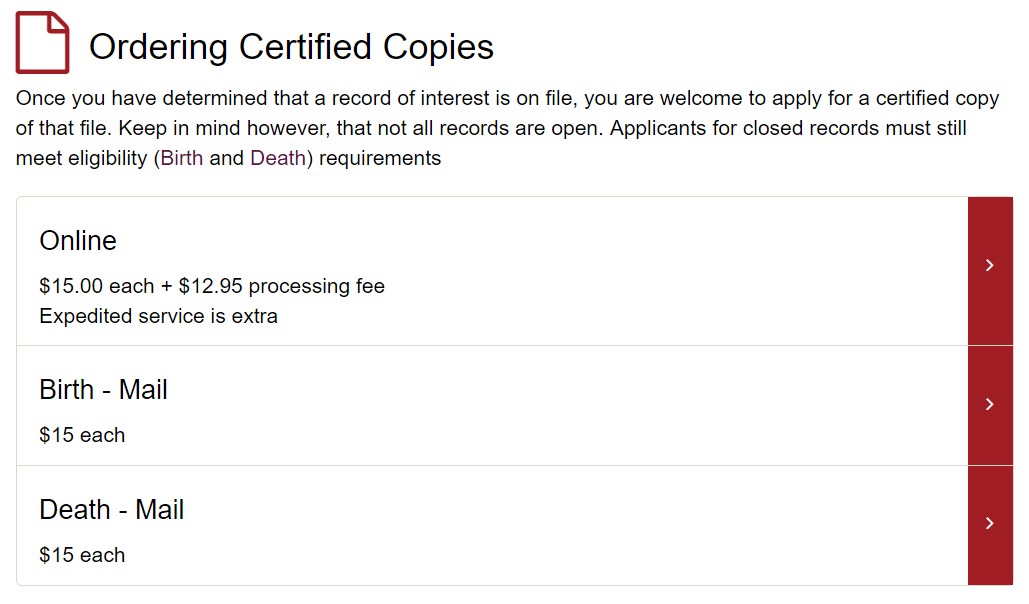
Ireland – Petty Sessions
New and updated genealogical collections this week include the Ireland, Petty Sessions Court Registers at Findmypast.
With over 227,700 new records, the petty sessions handled the bulk of lesser criminal and civil legal proceedings in Ireland. Ireland, Petty Sessions Court Registers now contains over 22.8 million records and is the largest collection of Irish court & prison records available anywhere online. Each record includes a transcript and a scanned image of the original document. These documents will include details of victims, witnesses and the accused, such as an address, date in court, details of the offence, details of the verdict, and the sentence.
Cases range from merchants who had not paid duty on their goods, to workers suing for unpaid wages. Farmers were sometimes fined for letting their cattle wander or for allowing their cart to be driven without their name painted on the side. Public drunkenness was a common offence, as was assault and general rowdiness. Though these records are not considered typical for finding vital information, they can work as great clues to lead you to the information you need.
United Kingdom – Dorset – Memorial Inscriptions
The Dorset Memorial Inscriptions collection at Findmypast contains over 40,000 new records. The collection contains details of inscriptions found on gravestones, tombs, monuments and even stained glass windows throughout 266 parishes within English county.
Each record includes a transcript. The information contained varies, however, most will include a combination of birth year, death year, burial date and location, relative’s names, memorial type and notes on the inscription.
United Kingdom – Warwickshire – Burials
Also at Findmypast, over 175,000 new records have been added to the Warwickshire Burials. The entire collection now contains more 1 million records and includes monumental inscriptions from Clifton Road Cemetery in Rugby.
Each record includes a transcript of the original burial registry or details from the monumental inscription. While the information listed will vary depending on the records original source, most will include your ancestor’s name, age, birth year, death date, burial year, burial location and the name of the officiating minister. A number of records will also include parent’s names and residence. Inscriptions will include information recorded on the individual’s grave stone and will usually include the name of the individual’s spouse, children and/or parents. Also, some grave sites may have more than one person buried in the same plot.
United Kingdom – Northumberland & Durham – Monumental Inscriptions
Over 16,000 records for the Northumberland & Durham Monumental Inscriptions at Findmypast are now available. These include the full description found on a grave stone or monument which will often include additional family names and dates.
Each record includes a transcript of the original source material. The amount of information may vary due to the age and legibility of individual monuments, but most records will include birth date, burial year, burial place, death date, denomination, inscription, and even the type of stone their monument was made from.
Ireland – Quaker Congregational Records
Also at Findmypast, Ireland, Society Of Friends (Quaker) Congregational Records has been updated with an additional 5,000 congregational records. Congregational records include details of the meetings your ancestor’s attended and the activities they engaged in. This is a nice way to enrich your family story.
These records, dating back to the mid-1600s, include minutes from half-yearly Quaker meetings. Each entry includes an image of the original handwritten record. The information included will vary, but most will include the congregation date, address, meeting, archive and reference.
MyHeritage Year End Review
MyHeritage had some pretty exciting things going on in 2016. In their recent blog post, “A Look Back at 2016,” you will see the list including the MyHeritage mobile app, the introduction of Tribal Quest, the debut of the beautiful Sun Chart, and their recent announcement of MyHeritage DNA, just to name a few. Visit the blog post to see the MyHeritage year-in-review for yourself!
Venezuela – Australia – El Salvador – Philippines – Netherlands – Canada – Spain – Slovenia – U. S. – Italy
FamilySearch.org took a short break over the holidays from updating their collections, but with the start of the new year, they have added and updated over 20 collections from all over the world! Check out these great records:
| Venezuela, Diocese of San Cristóbal, Catholic Church Records, 1601-1962 |
688,577 |
*09 Jan 2017 |
| Australia, Queensland, Immigration indexes, 1864-1940 |
64,508 |
*09 Jan 2017 |
| El Salvador Civil Registration, 1704-1990 |
832,749 |
*06 Jan 2017 |
| Philippines, Manila, Civil Registration, 1899-1984 |
2,847,720 |
*06 Jan 2017 |
| Netherlands, Archival Indexes, Miscellaneous Records |
1,254,022 |
*06 Jan 2017 |
| Canada Census, 1901 |
5,343,565 |
*06 Jan 2017 |
| Spain, Soldier Personal Service Files, 1835-1940 |
1,687 |
*06 Jan 2017 |
| BillionGraves Index |
20,128,469 |
*06 Jan 2017 |
| Slovenia, Ljubljana, Funeral Accounts, 1937-1970 |
5,664 |
*06 Jan 2017 |
| Massachusetts, Town Clerk, Vital and Town Records, 1626-2001 |
2,608,950 |
*05 Jan 2017 |
| Italy, Rieti, Civil Registration (State Archive), 1840-1945 |
134,767 |
*05 Jan 2017 |
| Indiana Marriages, 1811-2007 |
3,311,060 |
*05 Jan 2017 |
| Italy, Enna, Civil Registration (State Archive), 1866-1944 |
131,581 |
*05 Jan 2017 |
| Italy, Reggio Calabria, Civil Registration (State Archive), 1784-1943 |
108,208 |
*05 Jan 2017 |
| Italy, Trapani, Civil Registration (State Archive), 1906-1928 |
105,264 |
*05 Jan 2017 |
| Italy, Pescara, Civil Registration (State Archive), 1809-1929 |
385,939 |
*05 Jan 2017 |
| Italy, Cremona, Civil Registration (State Archive), 1744-1942 |
425,374 |
*05 Jan 2017 |
| Italy, Bergamo, Civil Registration (State Archive), 1866-1901 |
629,035 |
*05 Jan 2017 |
| Italy, Caltanissetta, Civil Registration (State Archive), 1820-1935 |
403,003 |
*05 Jan 2017 |
| Italy, Napoli, Civil Registration (State Archive), 1809-1865 |
633,646 |
*05 Jan 2017 |
| Italy, Taranto, Civil Registration (State Archive), 1809-1926 |
272,929 |
*05 Jan 2017 |
| Oklahoma, School Records, 1895-1936 |
90,841 |
*04 Jan 2017 |
Free Record Searches at Findmypast
Findmypast is offering a free records search weekend from January 12 – 15th, 2017. Don’t miss this amazing opportunity!
For records in the United Kingdom, click here.
For records in the US, click here.
For records in Ireland, click here.
For records in Australia, click here.
by Lisa Cooke | Dec 16, 2016 | 01 What's New, Records & databases
It’s snowing like crazy in some parts of the U.S. this week and it’s blown up a blizzard of great new and updated genealogical record collections! Take a look at this week’s round-up for Bishop’s Transcripts in England, Veteran Memorials in New Zealand, and records for Peru, United States, and Canada.

England – Devon – Bishop’s Transcripts
England, Devon Bishop’s Transcripts, 1558-1887 is a collection found at FamilySearch. Though a rather small collection, these Bishop’s transcripts contain an index from the county of Devon and cover the years of 1558-1887. Availability of records will vary by year and locality.
Starting in 1598, parish priests were to make a copy of their parish register and send it to the archdeacon or bishop each year. Many priests stopped producing bishop’s transcripts with the beginning of civil registration in 1837, but they did not fully disappear until after 1870.
As bishop’s transcripts generally contain more or less the same information as parish registers, they are particularly valuable when parish records have been damaged, destroyed, or lost. However, because bishop’s transcripts are copies of the original records, they are more likely to contain errors than parish registers might be.
This collection refers to baptism, marriage, and burial records. Baptism record entries are the most common in the index, followed by burial records, with marriage records being the smallest portion.
England – Worcestershire – Probate Records
The Worcestershire Probate Index 1660-1858 at Findmypast contains over 51,000 records taken from four types of probate documents. Each record includes a transcript only, however the transcript may include some or all of the following information:
- First and last name(s)
- Sex
- Date
- Occupation
- Place
- County
- Country
- Document type
England – Buckinghamshire – Marriages
The Findmypast collection titled Buckinghamshire Marriages contains over 49,000 records. The collection consists of transcripts covering 26 parishes within the English county of Buckinghamshire. These transcripts will cover the years between 1538 and 1838. Here is the list of parishes and years covered within this collection:
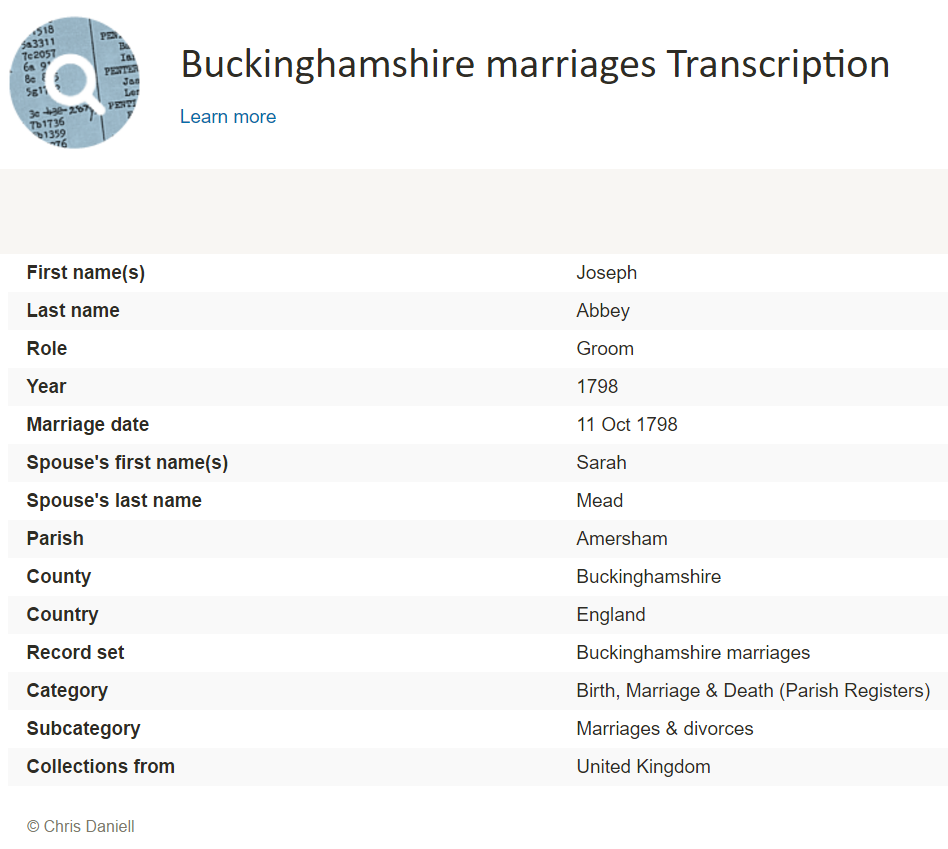
- Amersham 1561-1812
- Aston Clinton 1560-1812
- Bradenham 1627-1810
- Chalfont St Giles 1584-1812
- Chalfont St Peter 1538-1812
- Cheddington 1552-1812
- Chenies 1593-1836
- Chesham 1637-1838
- Cholesbury 1576-1810
- Edlesborough 1568-1812
- Fingest 1607-1812
- Hawridge 1600-1812
- Hedgerley 1540-1811
- High Wycombe 1600-1812
- Hormead 1575-1813
- Instone 1665-1812
- Iver 1605-1812
- Ivinghoe 1559-1812
- Masworth 1591-1812
- Mentmore 1575-1812
- Pitstone 1576-1812
- Slapton 1653-1812
- Soulbury 1575-1812
- Stoke Poges 1563-1812
- Turville 1582-1812
- Wendover 1576-1812
New Zealand – Church Records, Veteran Memorials, and Civil Service Examinations
Three new databases for New Zealand are available at Findmypast. The first, New Zealand Officiating Ministers 1882 is an index containing over 600 records and covering 13 religious denominations. Each record includes a transcript that will reveal the officiator’s official title and the church they served.
The second collection titled, New Zealand Waikaraka Cemetery Memorial 1902-1940 will help you find out if you have military ancestors who were memorialized as veterans who fought for the Empire and died at the Auckland Veterans’ Home between 1902 and 1940. Each record includes a transcript that will list their birth year, death year, age at death and force or regiment.
Lastly, the final collection at Findmypast is the New Zealand Civil Service Examinations 1906-1907. More than 700 records are available to explore and uncover the details of those who sat for the annual examinations for admission to, or promotion in, the Civil Service in mid-December 1906 and mid-January 1907. This collection is of transcripts only, but may contain the following information:
- First and last name(s)
- Examination location
- Notes
Peru – Puno – Civil Registration
Also at FamilySearch this week, Peru, Puno, Civil Registration, 1890-2005 has been updated. This collection includes births, marriages, deaths, and indexes. Some of these records have been indexed and are available for search. It should be noted that these records are written in Spanish.
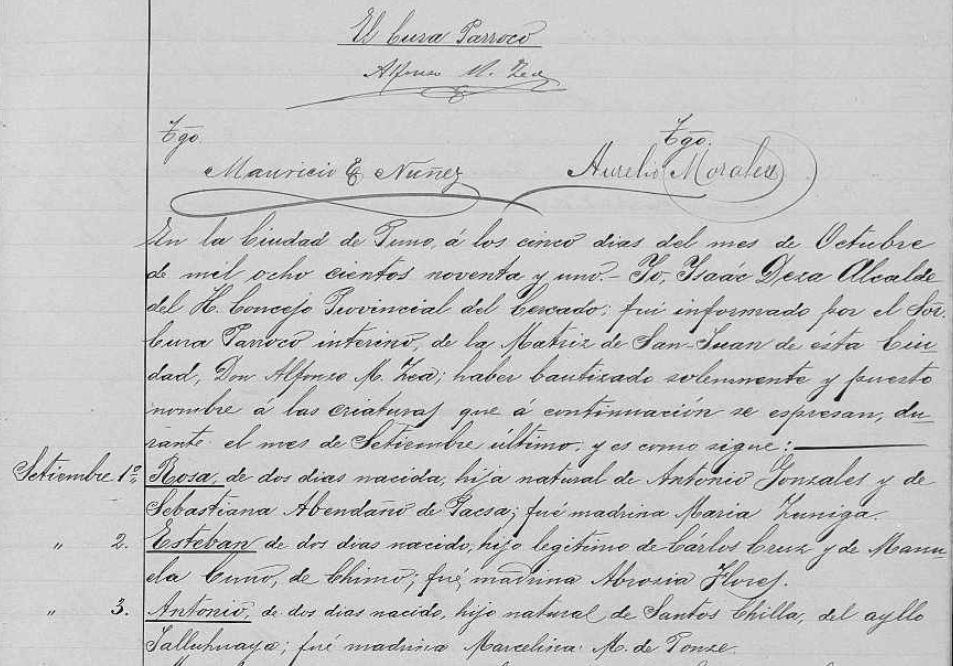
Civil registration record for a birth in Peru via FamilySearch.org.
Within these records you may find any of the following helpful information:
Birth records:
- Date and place of registration
- Name and gender of child
- Date, time, and place of birth
- Legitimacy
- Religious affiliation
- Parents’ names, ages, origin, and residence
- Presenter’s name, age, civil status, occupation, origin, and residence
- Witnesses’ name, age, civil status, and residence
- Sometimes, grandparents’ names
Marriage records may include the following:
- Date and place of registration
- Names of the bride and groom
- Date and place of marriage
- Groom’s age, civil status, nationality, race and occupation
- Names of groom’s parents, origin, and residence
- Bride’s age, civil status, nationality, race, and occupation
- Names of bride’s parents, origin, and residence
- Bride and groom’s religious affiliation
- Names, residence, and ages of witnesses
Death records may include:
- Time, date, and place of registration
- Name, gender, and age of the deceased
- Cause of death
- Date, place, and time of death
- Civil status, and occupation of deceased
- Nationality, origin, and residence of deceased
- Parents’ names of deceased if a minor
- Presenter’s name, age , and occupation
- Presenter’s origin, nationality, and residence
- Names of witnesses
United States – California – Cemetery Transcriptions
California Cemetery Transcriptions, 1850-1960 is a small collection at FamilySearch, but keep an eye on it as it will likely be added too. The collection consists of abstracts from cemeteries for 1850-1960 in the following counties:
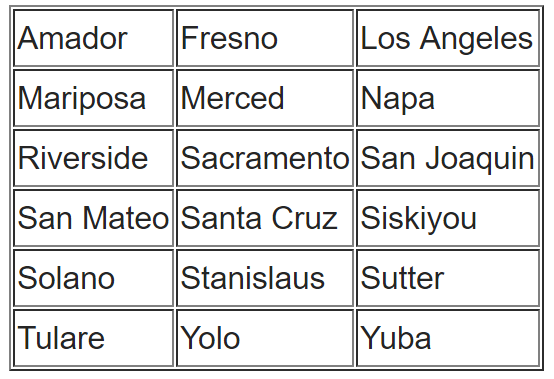
You can do a search for your targeted ancestor, or you can browse through the collection. To browse through any of the FamilySearch collections, you can read our article here and follow the step-by-step instructions.
Cemetery abstracts are actually quite useful to genealogists, especially if there has been a loss of death records in the targeted area.
Cemetery abstracts may contain the following information:
- Name of Cemetery
- Location (Town, County, State)
- Full name of deceased
- Lot number
- Age
- Date of Death
- Place of Death
- Names of Parents, Husband or Wife
- Other Important Facts
- Place of Birth
- Date of Birth
WWII Veterans – Interviews
We have found a free collection of oral histories and interviews of WWII veterans from around the world.
Chronicles of Courage: Stories of Wartime and Innovation is an online video archive of in-depth interviews put together by the Flying Heritage Collection. The project, which took 15 years to complete, went live Wednesday on the 75th anniversary of Pearl Harbor. All 335 video interviews — some of which are two hours long — will be available on the Flying Heritage Collection’s website at
www.flyingheritage.com/chronicles.
Another free collection includes eyewitness accounts by U.S. military personnel and family members in Pearl Harbor at the time of Japan’s 1941 attack. You can now access this site online. The Pearl Harbor Archive (
http://1941.mapping.jp/), also carries photos of U.S. warships ablaze and sinking. The interactive website material was gathered by Katrina Luksovsky, 49, an American living on Ford Island in the center of the harbor. The website was created by Hidenori Watanabe, 42, an associate professor of network design at Tokyo Metropolitan University.
The website works similar to Google Earth and is really quite remarkable. If you are a WWII buff, this is right up your alley!
Canada
The Canadian Museum of History and
Library and Archives Canada collaborate on new exhibition gallery. This gallery is named
Treasures from LAC and will showcase some of Canada’s most historically significant documents, making them more accessible to Canadians and enhancing public understanding of Canada’s history and heritage. Many of the documents showcased in the gallery will be referenced in the Canadian History Hall, a new permanent exhibition opening July 1, 2017 at the Canadian Museum of History. The LAC documents will complement the Hall and add greatly to the visitor experience.
Hire a Professional at LegacyTree
If you don’t have time to scour these records yourself, why not hire a profession

al? The team of expert
genealogists at
Legacy Tree Genealogists can help bust through your brick walls! They do the research and you enjoy the discoveries!
by Sunny | Jan 12, 2018 | 01 What's New, FamilySearch, Swedish, United States
Discover your Mayflower ancestors–or more about your family history from around the world–in new and updated genealogy records online. Among them are the Welsh National Book of Remembrance for WWI and various records for Indiana, Massachusetts, Montana,...
by Margaret Linford | Dec 20, 2017 | 01 What's New, Cemeteries |
Cemetery research is a crucial family history skill. Tombstones are monuments to our ancestors lives and may have key genealogical clues engraved in the stone. Follow these four steps to finding your ancestors’ burial places and the records that complement them.
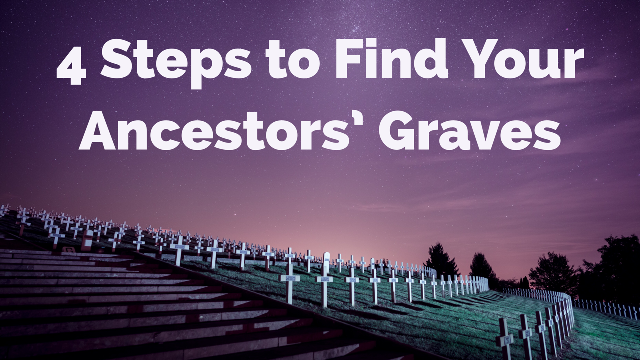
Many of my ancestors are buried just two miles from my house in Round Hill Cemetery in Marion, Virginia. I drive by the cemetery each day, as I take my daughters to school. I never pass by without glancing up at the hallowed ground which holds the remains of those who came before me. The sun perfectly illuminates their resting place each morning and a majestic tree stands at the very top of the hill–a living monument to the lives they led in the town where I now raise my own family.
It is an emotional experience to stand in the place where an ancestor’s remains have been laid to rest.
Each time I visit the grave of my grandma, I have a vision of a family standing around a casket on a bitter cold day in March. It was a just few days before the official start of spring, but it was the dead of winter to me. That ground is sacred to me, now.
Each time I visit, I am transported back in time to that day. A wound is re-opened for a moment, but the moment is fleeting because I quickly remember her life, not her death.
I remember the stories she told, the service her hands rendered to her family and, most importantly, the love that transcends time and even the icy grip of death. Death truly loses its “sting” as we stand before a monument of stone and see beyond to the life it represents. Scenes like this one have played out at each grave.
I am reminded of this quote from Fear Nothing, a Dean Koontz book, whenever I visit the cemetery:
“The trunks of six giant oaks rise like columns supporting a ceiling formed by their interlocking crowns. In the quiet space below, is laid out an aisle similar to those in any library. The gravestones are like rows of books bearing the names of those whose names have been blotted from the pages of life; who have been forgotten elsewhere but are remembered here.”
I have often gone to my ancestors’ resting places to take pictures of headstones and search for relatives I may have missed in the past. It seems like each time I visit, I notice something new.
This library of marble holds many clues that have helped me break down brick walls in my family history research. These clues have been there, etched in stone, for decades. It wasn’t until I recognized how to read the clues that I began to understand the importance of cemeteries in family history research.
These resting places have become much more to me than merely a place to go and offer a bouquet of flowers. There are answers waiting to be discovered. The key to getting the answers is knowing which questions to ask.
In my experience, the best genealogists are not the ones with the best cameras, the best software, or the best gadgets–they are the ones with the best questions.
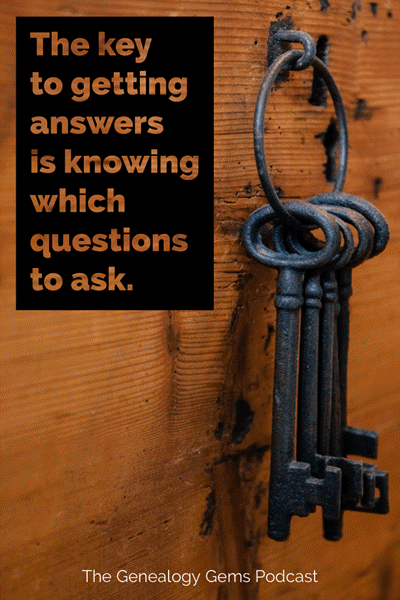
Curiosity is the most important tool to the successful genealogist. The next time you find yourself in a library of marble, take a few moments to let your curiosity run wild. Ask yourself:
- “Who are the people surrounding my family members?
- What are their stories?
- What do the etchings on their headstones mean?”
That curiosity will lead to the most remarkable discoveries and you will see for yourself how a piece of marble truly can break down a brick wall.
Below I’ve outlined the steps for finding family cemeteries and which questions you should be asking when you get there. Get inspired by my own examples of breaking down brick walls, and implement these methods I used for your own success!
Cemetery research step #1: Identify the cemetery
The first step in cemetery research is to identify the name of the cemetery where an ancestor was buried.
The best places to start looking are death certificates, funeral home records and obituaries. Each one of these records should contain the name of the cemetery where a family member was buried.
We sometimes fail to look beyond the names and dates on death certificates. If we get in the habit of taking the time to absorb all of the information on these important documents, we will find genealogical treasure.
Sometimes, the death certificate will not give us the name of the cemetery.
This was the case with my great-grandmother, Mollie Weimer Overbay. I was frustrated to see that the death certificate only indicated that she was buried, as opposed to cremated or removed to another location. While the certificate did not provide me with the name of a cemetery, it did offer the name of the funeral director: W.B. Seaver.
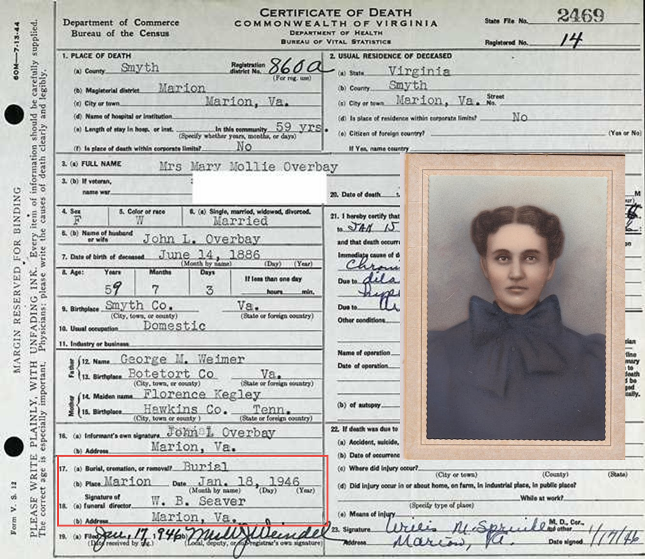
Luckily, I was able to follow this lead to the local funeral home. Within their records, I discovered that she was buried in Round Hill Cemetery, along with many of my other ancestors.
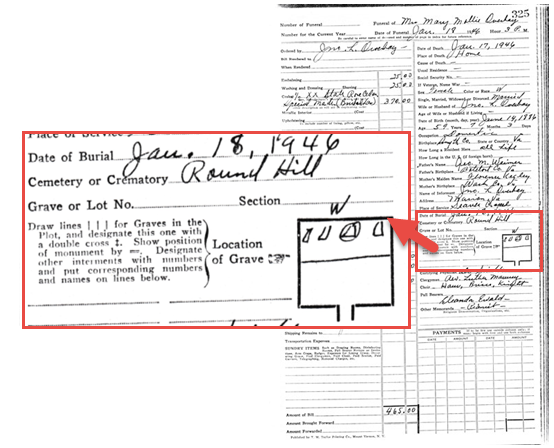
Cemetery research step #2: Locate the cemetery
Once you have located the name of the cemetery, several resources can guide you to its location.
Three helpful websites are listed below. Which you choose may depend on personal preference or familiarity but also on which site seems to have more records for the locales of most interest to you.
1. One of my favorite online resources is Find A Grave.
This website allows you to search for cemeteries all over the world.
At the home page, click on the Cemeteries tab (#1, below).
Then enter the name or location of the cemetery (#2). In the screenshot below, you can see part of the Google Maps interface that shows you the exact location of the cemetery, should you want to visit in person:
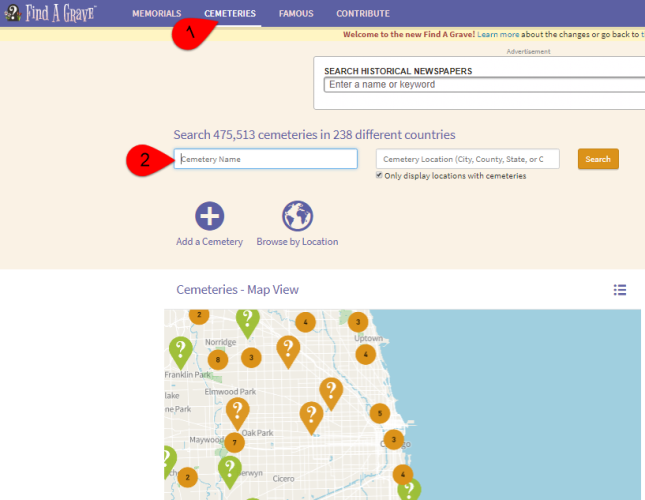
Find A Grave also has pictures of many of the headstones located within cemeteries.
2. 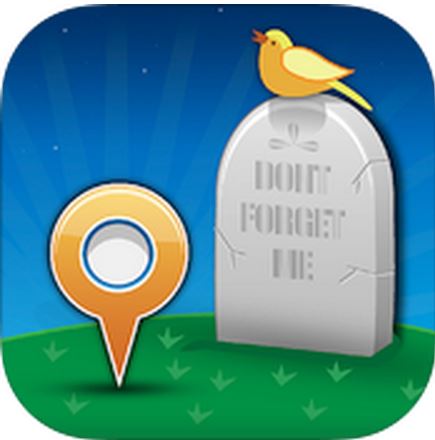 Billion Graves allows users to collect photos of headstones by using an iPhone/Android camera app.
Billion Graves allows users to collect photos of headstones by using an iPhone/Android camera app.
The app, available on Google Play and the App Store (for iPhone and iPad), tags the photos with the GPS location and, essentially, maps the cemetery as headstones are added.
Search for cemetery locations using the Billion Graves app or on the website by selecting the “Cemetery Search” option and then entering the name of the cemetery or a known address (to see it on Google Maps):

3. Interment.net can also be helpful.
From the home page, scroll down just a little until you see “Browse Cemetery Records by Region.” This can be especially helpful if you’re looking for all records within a specific county or other region. However, it’s not quite as useful if you’re trying to locate all cemeteries within a certain radius of a location, regardless of local boundaries.
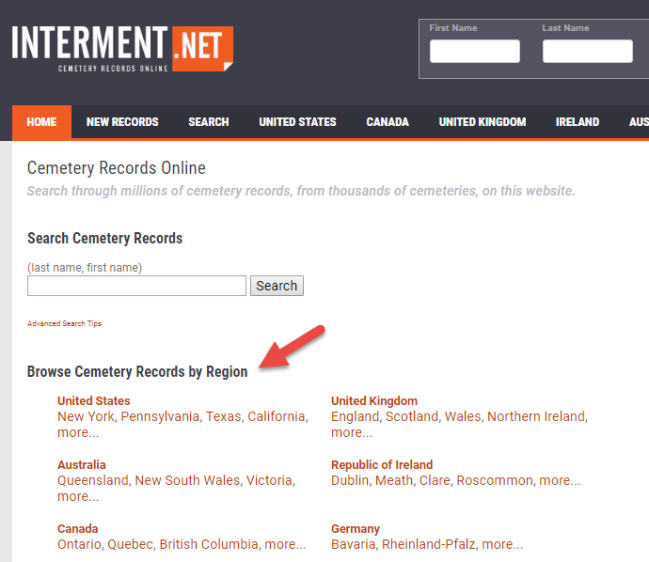
In addition to these resources, it is essential to contact the local library, genealogical society, and/or historical society where your ancestors are buried. These organizations are well-known for maintaining detailed listings of local cemeteries within their collections.
For instance, within Smyth County (where I live) there is a four-volume set of books that contains the work of two local historians, Mack and Kenny Sturgill. They spent several years mapping local cemeteries and collecting the names on all of the headstones.
Although these books were completed in the 1990s, the information is still valuable to genealogists. Detailed driving directions were given to help future researchers locate cemeteries that would otherwise be difficult to locate. Many of them are on private property and even in the middle of cow pastures or wooded areas.
Furthermore, some of the headstones that were legible in the 1990s have now become difficult to decipher due to weathering or have altogether disappeared. It is likely that the counties in which you are conducting cemetery research offer similar resources.
Cemetery research step #3: Prepare for a visit
Once you have found the cemetery you want to visit, you will want to take the following items along with you to make the most of your visit:
- a camera
- pair of gloves
- grass clippers
- notebook and pen
- long pants
- sturdy shoes
You may also want to use a damp cloth to bring out the carvings on headstones. A side note: if you are like me and have an aversion to snakes, you will either choose to go on cemetery expeditions during the winter, or you will invest in a pair of snake chaps.

Get more help! The Family Tree Cemetery Field Guide (above) contains detailed step-by-steps for using FindAGrave and BillionsGraves, plus guides for understanding tombstone epitaphs and symbol meanings.
Disclosure: Genealogy Gems is a participant in the Amazon Services LLC Associates Program, an affiliate advertising program designed to provide a means for sites to earn advertising fees by advertising and linking to Amazon.com. Thank you for supporting our free podcast by using our link.
Cemetery research step #4: Visit and search for clues
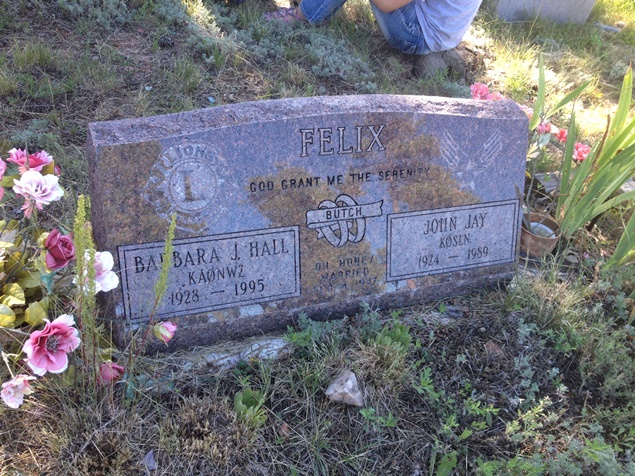
This headstone shows something unusual: the couple’s ham radio call signs (the codes engraved just below their names).
The headstones found in cemeteries can reveal much about your family. You will find more than birth and death dates. If you look closely, you will discover symbols related to military service and religious beliefs, maiden names of the women in your family, and you may even find family members that you never knew about. Many times, you will find children buried in the family plot. Look around to see who is buried near your ancestors. It is likely that you will find connections to other family members when you are visiting the cemetery. These connections may lead you to break down long-standing brick walls within your family history.
In my own experience, there have been several instances in which cemetery research has helped shed light on a family mystery. I had grown up hearing that there were members of our family who had fought in the Civil War. Who were these men? What experiences did they have during the war? Where had they fought?
The answers to these questions came as the result of a visit to the cemetery. I had gone to Round Hill Cemetery to photograph the headstones of my Weimer ancestors. As I worked my way down the row, I encountered an unfamiliar name—William Henry Wymer. At the top of his headstone, there was a Southern Cross of Honor—a symbol used to denote a soldier who fought during the Civil War. Below his name was the following inscription: “Co. A, 6 VA RES, C.S.A:”
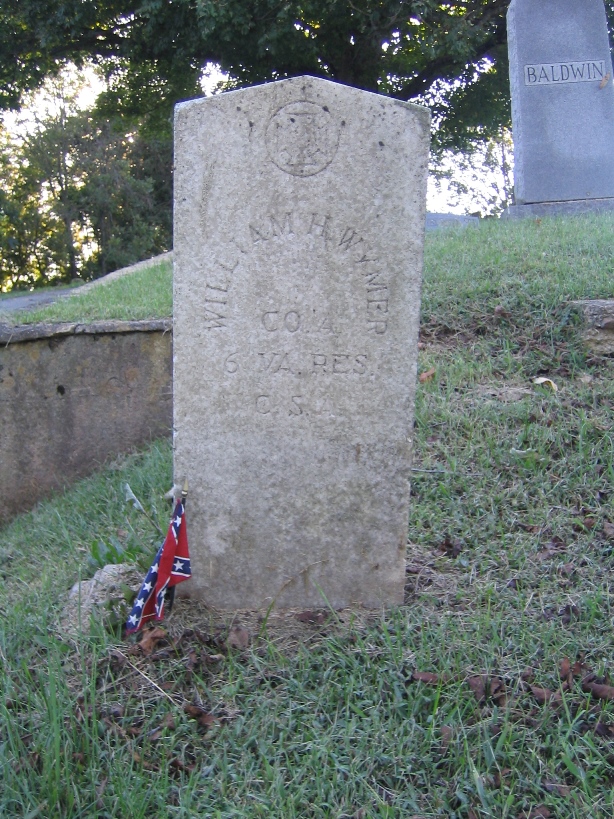
When I went home that afternoon, I began to search for more details. With some census research, I learned that he was the uncle of my great-grandmother, Mollie Weimer Overbay. Upon confirming his relationship to our family, I began searching for a pension application for his wife, Rhoda:
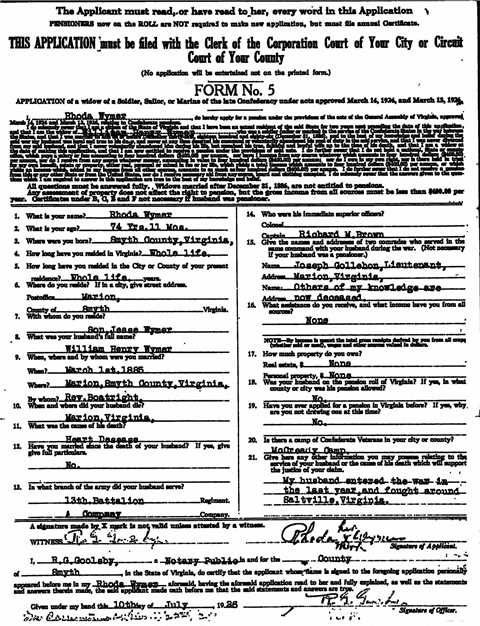
The application had been submitted in 1926 and told the story of William’s life. Among other things, I learned the answers to my questions about his service during the Civil War. His wife indicated that he enlisted during the last year of the war and was present during a well-known battle in our county—the Battle of Saltville. I am sure that my great-grandmother had grown up listening to tales of this battle and William’s experience during the war. The details of the story had been lost but were now re-discovered thanks to a trip to the cemetery.
Subtle clues like this one await you as you search out your own ancestors. The next time you make a trip to one of these libraries of marble, take a few moments to look closely at the clues that surround you. They may not be obvious, but they are there, waiting for your curiosity to uncover them. So, bring your cameras, your gloves, and your grass clippers to the cemetery on your next visit—but don’t forget to bring your questions and your ability to perceive the minute details, as you stand beneath the towering trees, among the rows of marble, waiting to offer up their long-held secrets.
More cemetery research tips
Disclosure: This article contains affiliate links and Genealogy Gems will be compensated if you make a purchase after clicking on these links (at no additional cost to you). Thank you for supporting Genealogy Gems.
by Lisa Cooke | Sep 16, 2017 | 01 What's New, Book Club, Libraries, Listeners & Readers, Mobile
Your local library may offer free genealogy magazines and ebooks. Why choose them over print? So many reasons! No more late fees. Read on the go. Choose your font size. So go ahead: check out digital versions of that Genealogy Gems Book Club title you’ve been meaning to read, or the current issue of Family Tree Magazine. Here’s how.

Here in the U.S., it’s my favorite time of year: back-to-school! The weather slowly cools. My children shake off summer’s mental lethargy. My own schedule resumes a more predictable, productive rhythm. And after months spent outdoors, I rediscover my local library. Top on my library list this fall: free genealogy ebooks and magazines I can check out on my mobile device. It’s on-the-go reading for my favorite hobby–with no searching under my bed when items come due to avoid those pesky late fees.
Free Genealogy eBooks and Magazines
Genealogy Gems Premium Member Autumn feels the same way about free genealogy gems at her local library. Here’s a letter she wrote to Lisa Louise Cooke:
“I’m really enjoying both the Premium and free podcasts. I also like the addition of the Genealogy Gems Book Club. I haven’t read all the books yet but am adding them all to my wishlist on Overdrive, a free app that allows you to check out digital books for free from your local library. They don’t have every book but they have many, many books including some from the book club. Most libraries have a lot of biographies and histories available through Overdrive for free that are of interest to genealogists as well. Some libraries are adding video to their Overdrive offerings too.
Many of these same libraries offer magazines free as well. My library…use[s] Zinio, a magazine app. I only subscribe to a couple of magazines now because I can get so many for free through my library (not to mention keeping my home neater by not having them laying everywhere).”
 It makes me happy that Autumn is enjoying the Genealogy Gems Book Club. We hear from many avid readers who love browsing our list of mainstream fiction and nonfiction picks for family history lovers. As part of our book club, we interview every book club author, too–from beloved novelists like Fannie Flagg to acclaimed journalists, memoir writers, and historians who take their own unique approaches to family history themes. Hear excerpts of these interviews on the free Genealogy Gems Podcast; full interviews run on the Genealogy Gems Premium Podcast, available by subscription.
It makes me happy that Autumn is enjoying the Genealogy Gems Book Club. We hear from many avid readers who love browsing our list of mainstream fiction and nonfiction picks for family history lovers. As part of our book club, we interview every book club author, too–from beloved novelists like Fannie Flagg to acclaimed journalists, memoir writers, and historians who take their own unique approaches to family history themes. Hear excerpts of these interviews on the free Genealogy Gems Podcast; full interviews run on the Genealogy Gems Premium Podcast, available by subscription.
Overdrive and Zinio
At Autumn’s recommendation, I started using Overdrive through my local library. I love it! I’ve listened to several digital audiobooks on the road and at the gym through Overdrive and have read several ebooks, too. (I’m always on the hunt for the next Genealogy Gems Book Club title.) The books just disappear at the end of the lending period (hence the “no late fees” bonus).
 Genealogy Gems Service Manager Lacey Cooke loves Overdrive, too. She sent me these four reasons why:
Genealogy Gems Service Manager Lacey Cooke loves Overdrive, too. She sent me these four reasons why:
1. Download for Offline Listening: “You can download the ebooks, audiobooks, magazines etc. to your device so that you can enjoy them offline (great for traveling). They’ll still disappear once your lending period expires, but having them available offline is awesome. You don’t have to worry about data charges or slow internet connections.
2. The Wishlist: Autumn briefly mentioned the Wishlist feature. I love this feature because it gives me somewhere to save book titles that I’m interested in reading at some point, but I’m not ready to check out just yet.
3. Bookmark/Syncing: You can bookmark a page, then pick up where you left off. If you have the Overdrive app on multiple devices, the app syncs. I can start reading on one device, and pick up on another right where I left off.
4. Format Adjustments: You can adjust the font style, size, and color to make it easier for you to read. I like to pick a nice, clean font in a big size so there’s no strain on my eyes.”
It’s worth noting that if you don’t already have a library card with your local library, you may be required to sign up in person to get a card, even if you only plan on using the Overdrive app to request items online. New releases or popular titles may have a wait list to check out the ebook or audiobook (especially if the library only possesses one copy). If you do have to place an ebook on hold, you will be notified via email when it becomes available to you, so if you don’t check your email regularly, keep that in mind when you place a hold. Each library system is different, so of course, your experience may vary.
Another helpful tip: not every library offers Overdrive ebook checkouts. But sometimes you can use another library’s Overdrive privileges. Autumn sent a link to these instructions on how to do so. (Thanks, Autumn!)
Autumn also mentioned the Zinio app. My library doesn’t offer Zinio yet, so I spent a little time on its public search portal. That doesn’t have a browsable genealogy category, and searches for the terms family history, genealogy and ancestry came up empty. But I did finally find these titles:
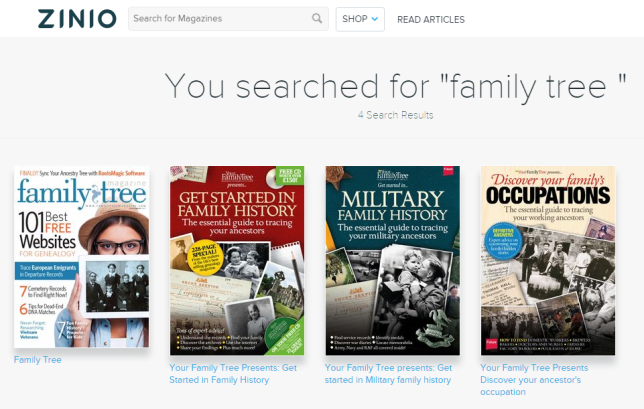
Lisa Louise Cooke, Genealogy Gems DNA expert Diahan Southard, and I are all frequent contributors to Family Tree Magazine, which we {heart} and recommend for its easy-reading research tips, hands-on tech and DNA tutorials, and the eye-candy layout.
More Free Genealogy Resources at Your Local Library
Of course, your local library may offer many additional free genealogy research and reading materials. Of tremendous value is access to Library editions of popular genealogy databases such as Ancestry, Findmypast, Fold3, and MyHeritage, along with institutional versions of historical newspaper databases. (Click here to learn more about the differences between the major genealogy websites.) Call your library or browse its website to see what resources may be available with your library card on site or even remotely from your own home or mobile device. And remember to watch for your library’s e-media options like those recommended by Autumn.
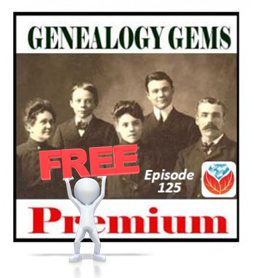 As a special shout-out to all the free genealogy resources at your library, Lisa Louise Cooke has granted free access for everyone to Genealogy Gems Premium Podcast episode #125. In this episode, Lisa has a full discussion about more free genealogy gems at public libraries with Cheryl McClellan. Cheryl is not only my awesome mom, she rocks professionally as the Geauga County, Ohio public library system staff genealogist!
As a special shout-out to all the free genealogy resources at your library, Lisa Louise Cooke has granted free access for everyone to Genealogy Gems Premium Podcast episode #125. In this episode, Lisa has a full discussion about more free genealogy gems at public libraries with Cheryl McClellan. Cheryl is not only my awesome mom, she rocks professionally as the Geauga County, Ohio public library system staff genealogist!
This Premium episode is usually exclusively for Genealogy Gems Premium members. If you love it, and you’re not already a member, consider gifting yourself a “back to school” subscription. It’s the most fun, energizing, apply-it-now genealogy learning experience you may ever have.


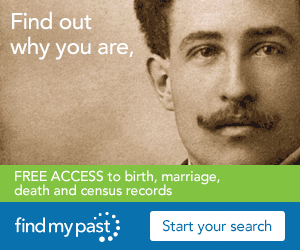

















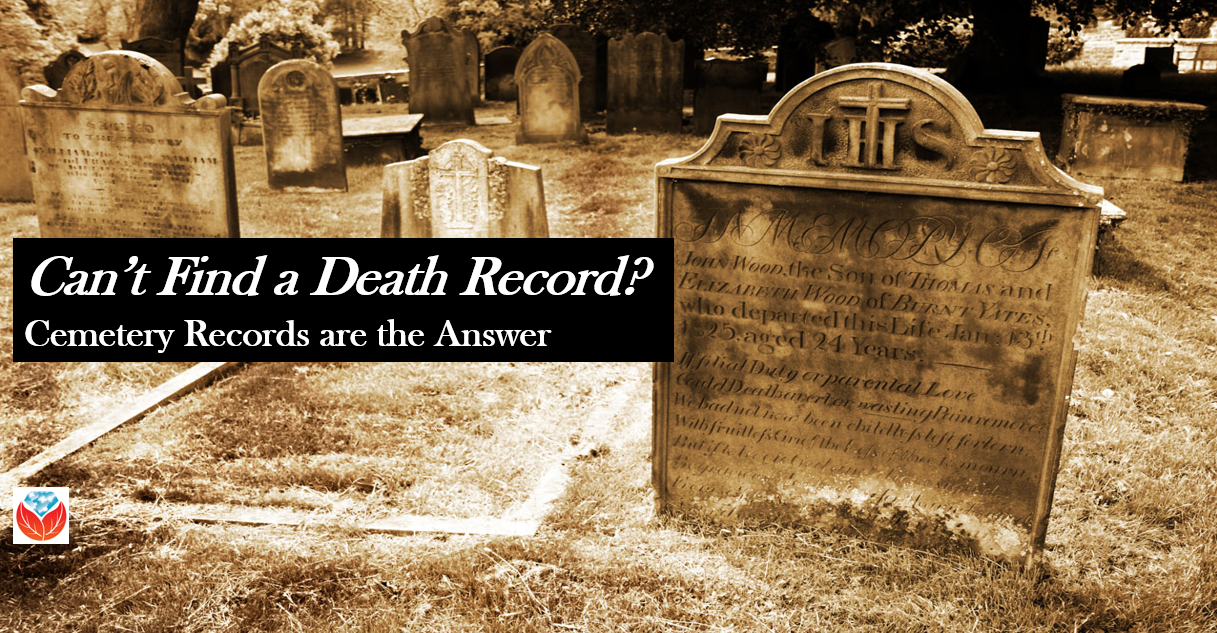


 Genealogy Gems Service Manager Lacey Cooke loves Overdrive, too. She sent me these four reasons why:
Genealogy Gems Service Manager Lacey Cooke loves Overdrive, too. She sent me these four reasons why:




